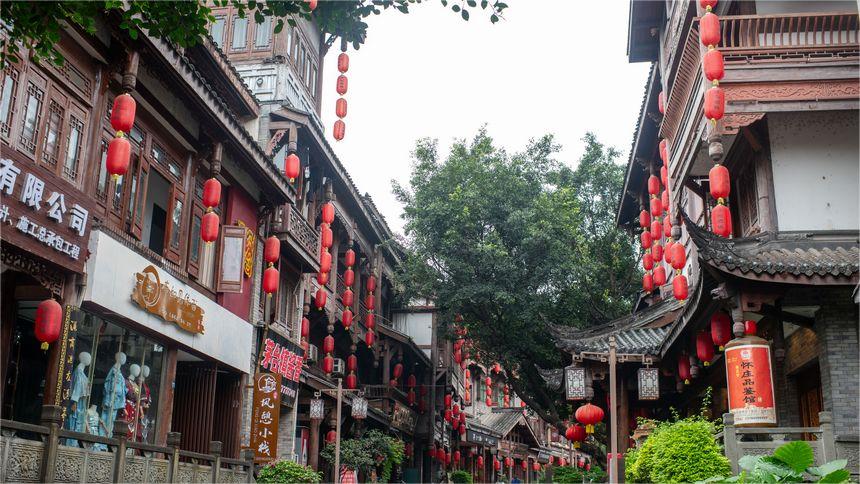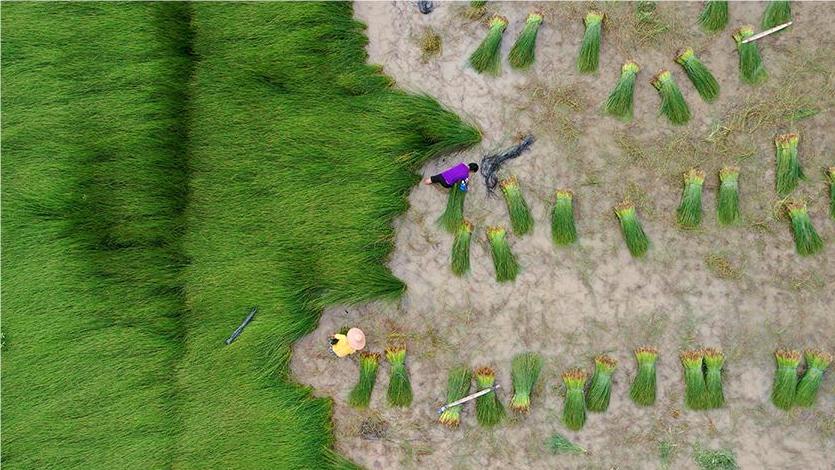Restoration project of Jiankou section of Great Wall underway in Beijing

Archaeologists arrive at an archaelogical site at the Jiankou section of the Great Wall in Beijing, capital of China, July 2, 2024.
Forty years ago, a campaign to protect the Great Wall with the help of social funds was launched in Beijing. Today, social forces still play a crucial role in the Great Wall protection and restoration.
An ongoing restoration project of the Jiankou section of the Great Wall adopts a "simultaneous archaeology and restoration" approach, where archaeological work is completed on a section before restoration begins.
The restoration project, with the participation of research institutions, universities and social organizations engaged in non-profit activities, is scheduled to be completed in 2026. (Xinhua/Chen Zhonghao)

Workers walk on the Jiankou section of the Great Wall in Beijing, capital of China, July 2, 2024.
Forty years ago, a campaign to protect the Great Wall with the help of social funds was launched in Beijing. Today, social forces still play a crucial role in the Great Wall protection and restoration.
An ongoing restoration project of the Jiankou section of the Great Wall adopts a "simultaneous archaeology and restoration" approach, where archaeological work is completed on a section before restoration begins.
The restoration project, with the participation of research institutions, universities and social organizations engaged in non-profit activities, is scheduled to be completed in 2026. (Xinhua/Chen Zhonghao)
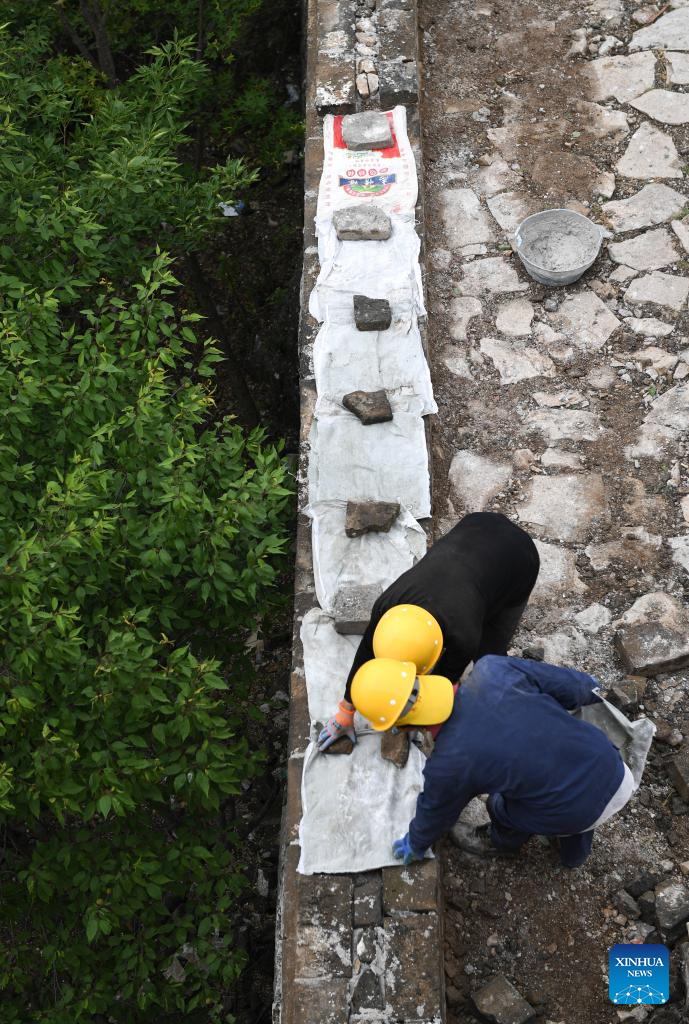
Workers cover the newly laid bricks with woven bags to shelter from the rain at the Jiankou section of the Great Wall in Beijing, capital of China, July 2, 2024.
Forty years ago, a campaign to protect the Great Wall with the help of social funds was launched in Beijing. Today, social forces still play a crucial role in the Great Wall protection and restoration.
An ongoing restoration project of the Jiankou section of the Great Wall adopts a "simultaneous archaeology and restoration" approach, where archaeological work is completed on a section before restoration begins.
The restoration project, with the participation of research institutions, universities and social organizations engaged in non-profit activities, is scheduled to be completed in 2026. (Xinhua/Chen Zhonghao)
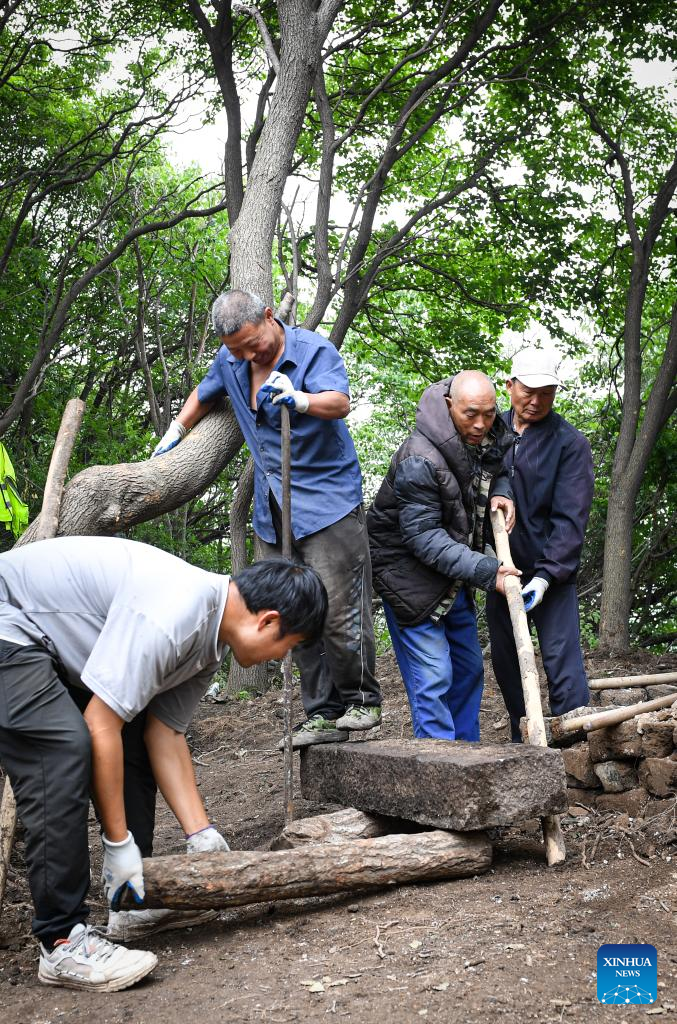
Workers transport an excavated stone at an archaelogical site at the Jiankou section of the Great Wall in Beijing, capital of China, July 2, 2024.
Forty years ago, a campaign to protect the Great Wall with the help of social funds was launched in Beijing. Today, social forces still play a crucial role in the Great Wall protection and restoration.
An ongoing restoration project of the Jiankou section of the Great Wall adopts a "simultaneous archaeology and restoration" approach, where archaeological work is completed on a section before restoration begins.
The restoration project, with the participation of research institutions, universities and social organizations engaged in non-profit activities, is scheduled to be completed in 2026. (Xinhua/Chen Zhonghao)
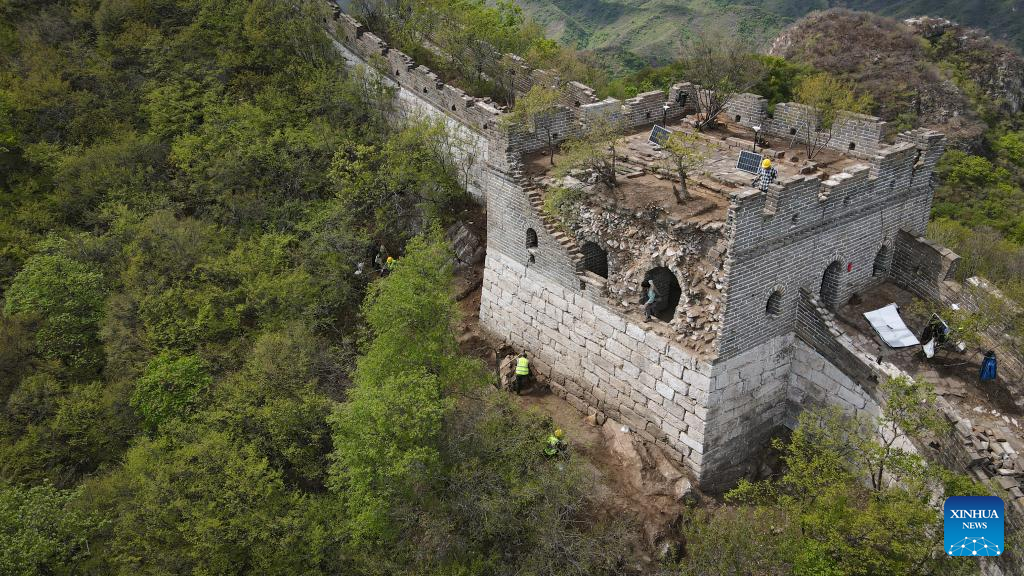
An aerial drone photo taken on April 30, 2024 shows workers working at an archaelogical site of a watch tower of the Jiankou section of the Great Wall in Beijing, capital of China.
Forty years ago, a campaign to protect the Great Wall with the help of social funds was launched in Beijing. Today, social forces still play a crucial role in the Great Wall protection and restoration.
An ongoing restoration project of the Jiankou section of the Great Wall adopts a "simultaneous archaeology and restoration" approach, where archaeological work is completed on a section before restoration begins.
The restoration project, with the participation of research institutions, universities and social organizations engaged in non-profit activities, is scheduled to be completed in 2026. (Xinhua/Chen Zhonghao)
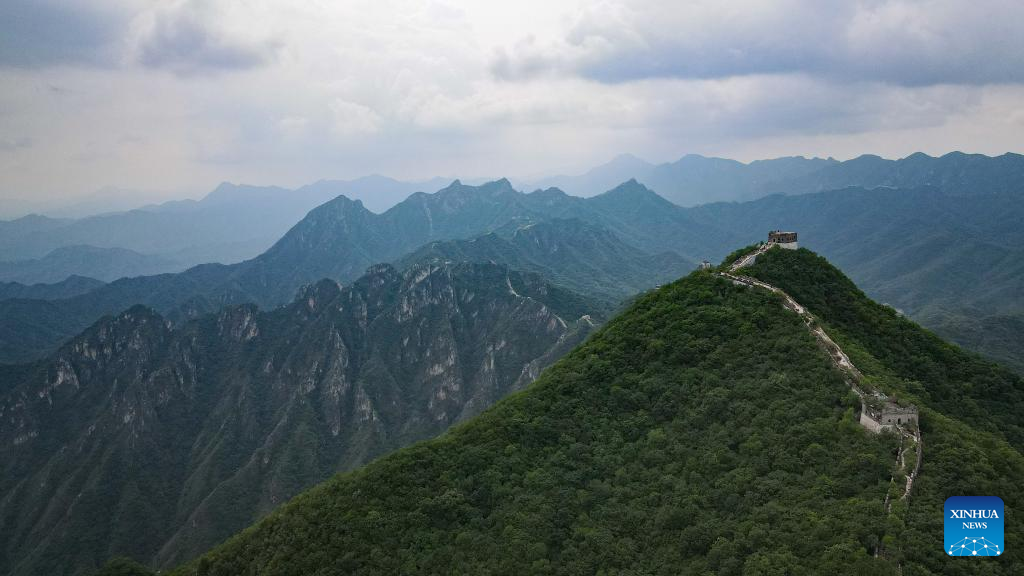
An aerial drone photo taken on July 1, 2024 shows the Jiankou section of the Great Wall in Beijing, capital of China.
Forty years ago, a campaign to protect the Great Wall with the help of social funds was launched in Beijing. Today, social forces still play a crucial role in the Great Wall protection and restoration.
An ongoing restoration project of the Jiankou section of the Great Wall adopts a "simultaneous archaeology and restoration" approach, where archaeological work is completed on a section before restoration begins.
The restoration project, with the participation of research institutions, universities and social organizations engaged in non-profit activities, is scheduled to be completed in 2026. (Xinhua/Chen Zhonghao)
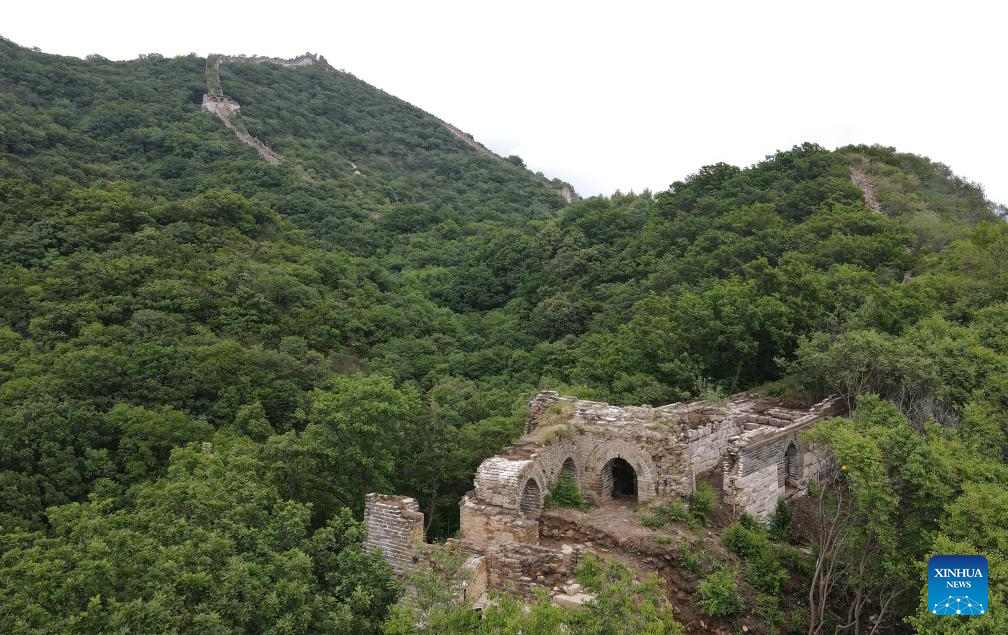
An aerial drone photo taken on July 1, 2024 shows a watch tower of the Jiankou section of the Great Wall in Beijing, capital of China.
Forty years ago, a campaign to protect the Great Wall with the help of social funds was launched in Beijing. Today, social forces still play a crucial role in the Great Wall protection and restoration.
An ongoing restoration project of the Jiankou section of the Great Wall adopts a "simultaneous archaeology and restoration" approach, where archaeological work is completed on a section before restoration begins.
The restoration project, with the participation of research institutions, universities and social organizations engaged in non-profit activities, is scheduled to be completed in 2026. (Xinhua/Chen Zhonghao)

A repairer works at the Jiankou section of the Great Wall in Beijing, capital of China, July 1, 2024.
Forty years ago, a campaign to protect the Great Wall with the help of social funds was launched in Beijing. Today, social forces still play a crucial role in the Great Wall protection and restoration.
An ongoing restoration project of the Jiankou section of the Great Wall adopts a "simultaneous archaeology and restoration" approach, where archaeological work is completed on a section before restoration begins.
The restoration project, with the participation of research institutions, universities and social organizations engaged in non-profit activities, is scheduled to be completed in 2026. (Xinhua/Chen Zhonghao)

Repairers work at the Jiankou section of the Great Wall in Beijing, capital of China, July 2, 2024.
Forty years ago, a campaign to protect the Great Wall with the help of social funds was launched in Beijing. Today, social forces still play a crucial role in the Great Wall protection and restoration.
An ongoing restoration project of the Jiankou section of the Great Wall adopts a "simultaneous archaeology and restoration" approach, where archaeological work is completed on a section before restoration begins.
The restoration project, with the participation of research institutions, universities and social organizations engaged in non-profit activities, is scheduled to be completed in 2026. (Xinhua/Chen Zhonghao)
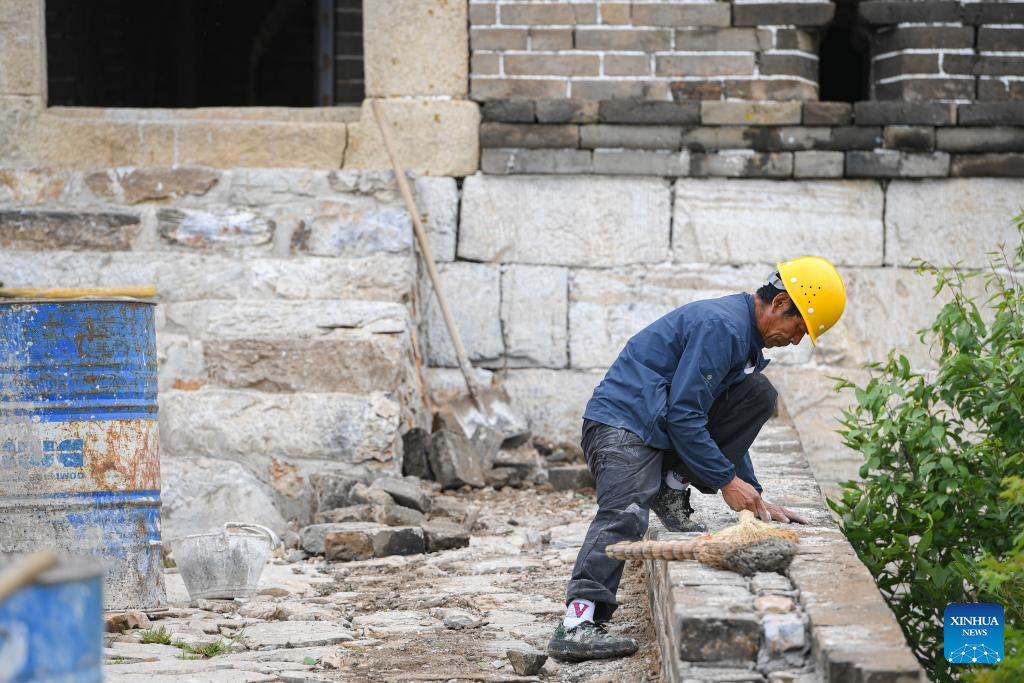
A repairer works at the Jiankou section of the Great Wall in Beijing, capital of China, July 2, 2024.
Forty years ago, a campaign to protect the Great Wall with the help of social funds was launched in Beijing. Today, social forces still play a crucial role in the Great Wall protection and restoration.
An ongoing restoration project of the Jiankou section of the Great Wall adopts a "simultaneous archaeology and restoration" approach, where archaeological work is completed on a section before restoration begins.
The restoration project, with the participation of research institutions, universities and social organizations engaged in non-profit activities, is scheduled to be completed in 2026. (Xinhua/Chen Zhonghao)
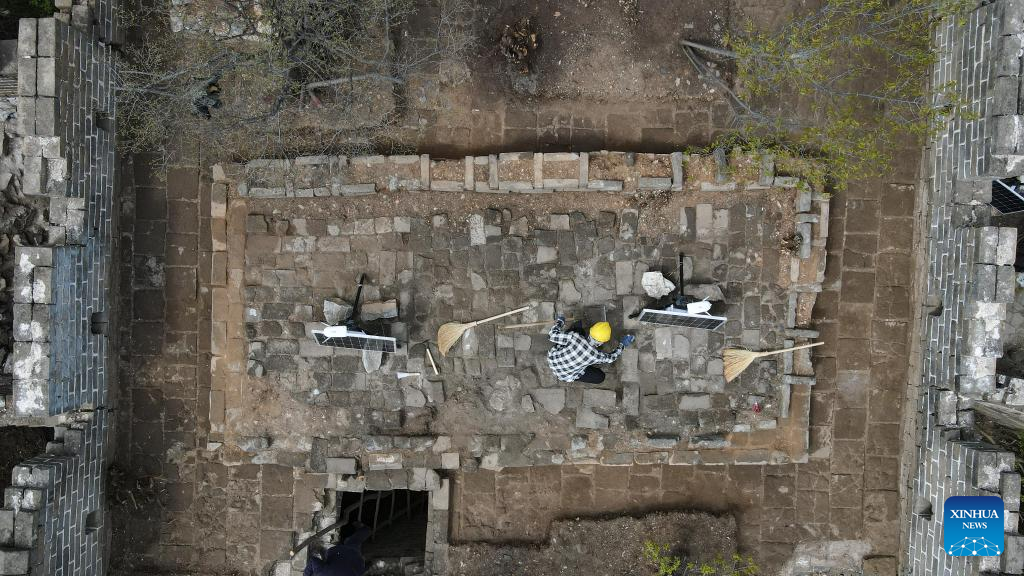
An aerial drone photo taken on April 30, 2024 shows a worker doing archaelogical work on a watch tower of the Jiankou section of the Great Wall in Beijing, capital of China.
Forty years ago, a campaign to protect the Great Wall with the help of social funds was launched in Beijing. Today, social forces still play a crucial role in the Great Wall protection and restoration.
An ongoing restoration project of the Jiankou section of the Great Wall adopts a "simultaneous archaeology and restoration" approach, where archaeological work is completed on a section before restoration begins.
The restoration project, with the participation of research institutions, universities and social organizations engaged in non-profit activities, is scheduled to be completed in 2026. (Xinhua/Chen Zhonghao)
Photos
Related Stories
Copyright © 2024 People's Daily Online. All Rights Reserved.






